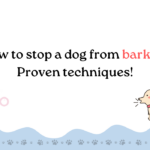The Best Fluffy Pancakes recipe you will fall in love with. Full of tips and tricks to help you make the best pancakes.
When it comes to growing healthy plants, light is one of the most critical factors. Whether you’re an indoor gardener or nurturing an outdoor garden, the debate between grow lights vs sunlight is a common one. Both options have unique benefits and challenges, and choosing the right one depends on your plants’ needs, environment, and goals. In this article, we’ll explore the differences, advantages, and disadvantages of growing lights and sunlight to help you make an informed decision for optimal plant growth.
Table of Contents
ToggleWhat is Sunlight, and Why is it Essential for Plants?
Sunlight is the natural source of light provided by the sun, containing a full spectrum of wavelengths that plants use for photosynthesis. It’s free, abundant (in most regions), and perfectly suited for plant growth when conditions are ideal.
Benefits of Sunlight for Plant Growth
- Full Spectrum Light: Sunlight provides a complete range of wavelengths, including blue, red, and ultraviolet light, which are essential for photosynthesis and overall plant development.
- Cost-Free: No electricity bills or equipment costs make sunlight the most budget-friendly option.
- Natural Growth Cycles: Sunlight aligns with plants’ natural circadian rhythms, promoting healthy flowering and fruiting.
- Environmental Benefits: Using sunlight reduces your carbon footprint compared to energy-intensive grow lights.
Drawbacks of Sunlight
- Weather Dependency: Cloud cover, seasonal changes, or limited daylight hours can reduce light availability.
- Inconsistent Intensity: Sunlight intensity varies by location, time of day, and season, which may not suit plants requiring stable conditions.
- Limited Control: You can’t adjust sunlight’s spectrum or duration, which can be a challenge for specific crops.
What are Grow Lights, and How Do They Work?
Grow lights are artificial light sources designed to mimic sunlight’s spectrum, enabling indoor plant growth. They come in various types, including LED, fluorescent, and high-intensity discharge (HID) lights, each offering different benefits for specific plants and growth stages.
Benefits of Grow Lights for Plant Growth
- Complete Control: Adjust light intensity, spectrum, and duration to match your plants’ needs, regardless of external conditions.
- Year-Round Gardening: Grow lights allow you to cultivate plants indoors during winter or in areas with limited sunlight.
- Customizable Spectrum: Modern LED grow lights let you tailor wavelengths (e.g., blue for vegetative growth, red for flowering) to optimize growth.
- Space Efficiency: Ideal for small spaces like apartments, grow tents, or hydroponic setups.
Drawbacks of Sunlight
- Initial Cost: High-quality grow lights, especially LEDs, can be expensive upfront.
- Energy Consumption: Running grow lights increases electricity bills, especially for large setups.
- Learning Curve: Choosing the right light type, distance, and schedule requires research and experimentation.
Grow Lights vs Sunlight: Key Comparisons
| Factor | Sunlight | Grow Lights |
| Cost | Free | High initial and operational costs |
| Control | Limited | High (spectrum, intensity, duration) |
| Availability | Weather and season-dependent | Available year-round |
| Suitability | Best for outdoor gardens | Ideal for indoor or controlled environments |
Which is Better for Optimal Plant Growth?
The choice between grow lights and sunlight depends on your specific needs:
- Choose Sunlight If: You have access to consistent, strong sunlight and are growing outdoors or in a greenhouse. It’s ideal for budget-conscious gardeners and plants that thrive in natural conditions.
- Choose Grow Lights If: You’re growing indoors, in low-light regions, or need precise control over light conditions. Grow lights are perfect for hydroponics, seedlings, or year-round gardening.
For many gardeners, a hybrid approach works best. Use sunlight when available and supplement with grow lights during cloudy days or winter months to ensure consistent growth.
Tips for Using Grow Lights Effectively
- Choose the Right Type: LED grow lights are energy-efficient and versatile for most plants.
- Adjust Light Distance: Keep lights 6–24 inches from plants, depending on the light type and plant stage, to avoid burning or stretching.
- Set a Schedule: Mimic natural daylight with 12–16 hours of light for vegetative growth and 8–12 hours for flowering plants.
- Monitor Heat: Ensure proper ventilation to prevent overheating, especially with HID lights.
Both grow lights and sunlight have their place in gardening, and the best choice depends on your plants, environment, and resources. Sunlight offers a cost-free, natural solution for outdoor gardens, while grow lights provide unmatched control and flexibility for indoor setups. By understanding the strengths and limitations of each, you can create the perfect growing conditions for healthy, thriving plants.
Ready to start your gardening journey?




